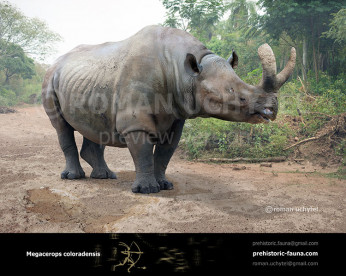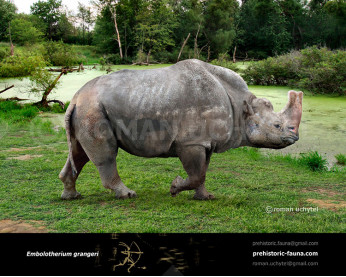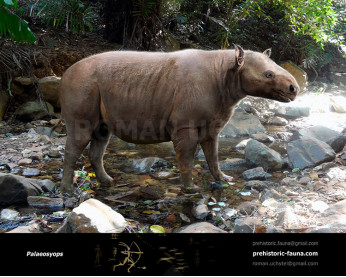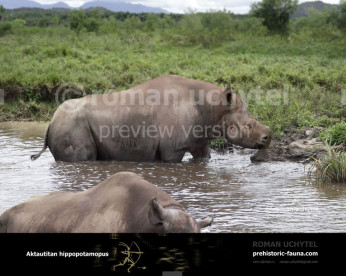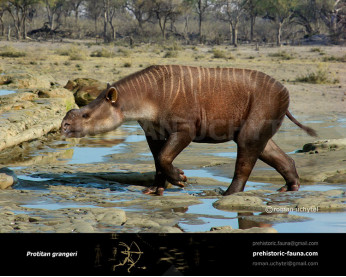Protitanops
24942494
Protitanops (†Protitanops curryi (Stock, 1936))
Order:Perissodactyla
Family: †Brontotheriidae
Temporal range: during the Eocene in the North America
Dimensions: length - 4,5 m, height - 230 сm, weight - 2000 kg
Brontotheriidae is a family of extinct mammals belonging to the order Perissodactyla, the order that includes horses, rhinoceroses, and tapirs. Superficially, they looked rather like rhinos, although they were actually more closely related to horses from suborder Hippomorpha. They lived around 56–34 million years ago, until the very close of the Eocene.
Protitanops curryi is an extinct species of brontothere that lived during the Eocene, in the Western parth of the North America. In Death Valley (California) the best specimens of the species P. curryi have been found. It bore a strong resemblance to Megacerops brontotheres with its knob-shaped horns. However, the position of the horns differed in Protitanops, in that they pointed straight up, rather than more forwards, like in Megacerops.
Payment
You may use multiple payment methods to buy image such as credit cards, PayPal and bank transfer.
Protitanops (†Protitanops curryi (Stock, 1936))
Order:Perissodactyla
Family: †Brontotheriidae
Temporal range: during the Eocene in the North America
Dimensions: length - 4,5 m, height - 230 сm, weight - 2000 kg
Brontotheriidae is a family of extinct mammals belonging to the order Perissodactyla, the order that includes horses, rhinoceroses, and tapirs. Superficially, they looked rather like rhinos, although they were actually more closely related to horses from suborder Hippomorpha. They lived around 56–34 million years ago, until the very close of the Eocene.
Protitanops curryi is an extinct species of brontothere that lived during the Eocene, in the Western parth of the North America. In Death Valley (California) the best specimens of the species P. curryi have been found. It bore a strong resemblance to Megacerops brontotheres with its knob-shaped horns. However, the position of the horns differed in Protitanops, in that they pointed straight up, rather than more forwards, like in Megacerops.

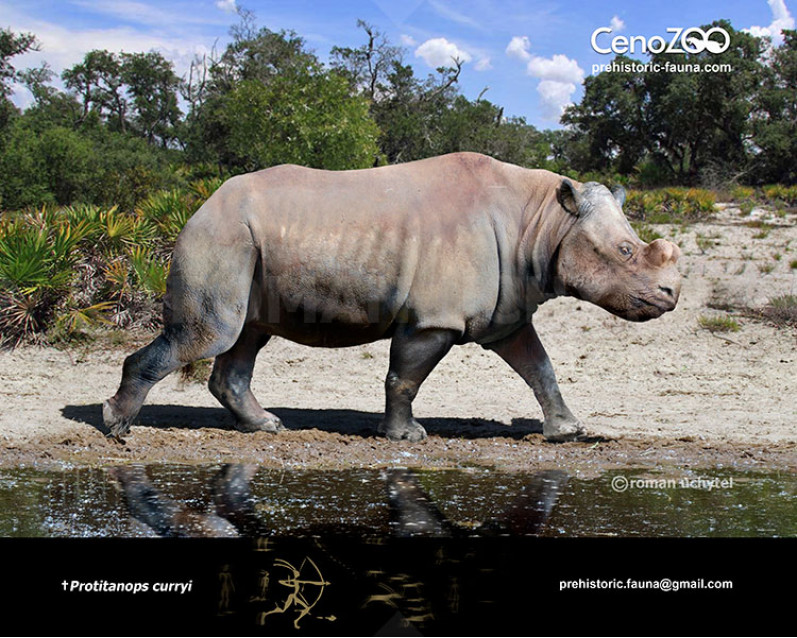
-797x638.jpg)

-70x56.jpg)
